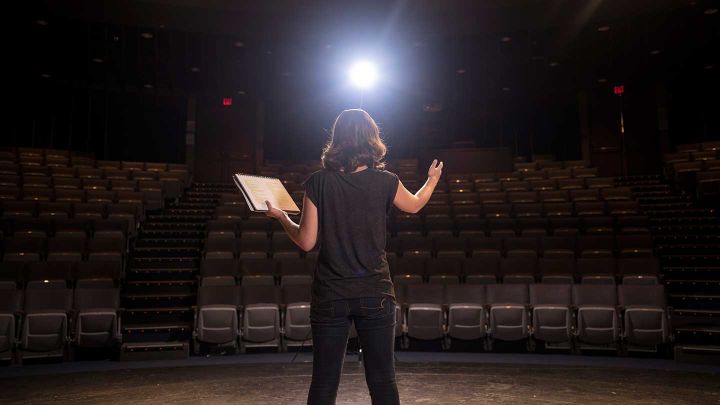What does it mean to love and be loved? What does it mean to be alive? What does it mean to be human? By pondering these existential questions, director Charlie Kaufman crafts one of 2015’s most unique movie experiences with “Anomalisa.”
As Kaufman’s second film, “Anomalisa” could be described as a film that plays it safe by settling comfortably into a familiar midlife crisis scenario if it weren’t for one thing: the film is entirely shot with stop-motion puppets.
The narrative follows Michael, a middle-aged corporate speaker puppet who struggles with depression and marital issues. Viewers catch up with him as he takes up lodging in a hotel in Cincinnati to promote his book on enhancing customer service in the workplace. As if by some trick of fate, Michael meets Lisa, a nervous and soft-spoken woman, voiced by Jennifer Jason Leigh, who is entirely unlike anyone Michael has ever seen before.
Michael’s fascination with Lisa as an entirely unique individual is highlighted by a clever sound device where every other character, man, woman and child, besides Michael and Lisa, all share the same masculine voice. Also, while the other puppets are blue-eyed and pale-faced, Michael and Lisa share the same green eye color and rosy cheeks. To Michael’s ears, the verbal exchanges that he hears going on around him sound meaningless and obligatory, as if one’s very existence is dependent on incessant babbling. It isn’t until he finds Lisa that Michael becomes aware of the possibility of meaningful human connection.
It is mostly these technical choices that reveal the appropriateness of the puppet medium. The same metaphors and stylistic techniques that Kaufman uses to communicate Michael and Lisa’s individuality simply would not have been effective had the director cast living, breathing actors instead of puppets.
Throughout Michael’s ordeal to discover himself and his place in reality, Kaufman prompts us to question our understanding of ourselves in reality, as either a part of the collective society in which we find ourselves or as anomalies who don’t seem to fit in anywhere. “Anomalisa” suggests that it is in our best interest to adapt to social norms and expectations in public but internally, and among those with whom we are closest, we should experience the freedom to embrace ourselves as broken, hurt and unusual individuals.
“Anomalisa” doesn’t quite devote enough time to answering the existential questions that it wrestles with, and the film ends almost too abruptly with Michael reverting to his pre-Lisa state of depression and despondency. Yet there is such tenderness and emotion in the way that Kaufman handles many of the film’s more memorable scenes that makes the film entirely unique and more human than most films can ever hope to be.












